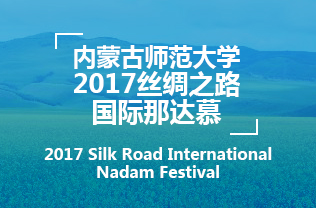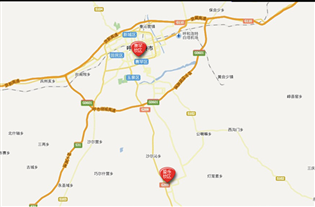Inner Mongolia Key Laboratory for Remote Sensing and Geographic Information Systems
Inner Mongolia Key Laboratory for Remote Sensing and Geographic Information Systems at Inner Mongolia Normal University (IMNU), with a total investment of nearly 10 million yuan ($1.54 million), was established in 1999.
In 2003, the lab was approved as a key lab for Remote Sensing (RS) and Geographic Information Systems (GIS) by the Science and Technology Department of Inner Mongolia autonomous region, the first of its kind in the region.
It was chosen as Inner Mongolia's first engineering laboratory for the Global Positioning System (GPS), GIS and RS in June 2012.
With advanced facilities like MODIS satellite receiving stations, remote sensing satellites and spectrometers, the lab is focused on the research of natural resources in the Mongolian Plateau, risk assessments of regional natural resources, and the application of technologies like RS, GIS and GPS.
It offers undergraduate programs and four master's programs in Human Geography, Physical Geography, Land and Resources Management, and Cartography and Geographical Information Systems.
Liu Jiyuan, the former researcher from the Institute of Geographic Sciences and Natural Resources Research under the Chinese Academy of Sciences (CAS) was elected as the director of the lab's academic committee.
At present, there are eight full-time researchers and more than 50 part-time researchers working at the lab, including some 10 professors from foreign countries such as Mongolia, Russia, and Japan.
The lab has developed at a breathtaking pace into a comprehensive research center and made outstanding achievements in fields such as international academic cooperation, research projects, software copyrights, and academic papers over the past decade.
International academic cooperation
The lab is open to international academic cooperation and exchanges. It has established good relationships with foreign universities and institutions like the University of Tokyo, Chiba University, Mongolian Academy of Sciences, National University of Mongolia (NUM) and Budker Institute at the Russian Academy of Sciences.
In 2006, it worked with the Institute of Geographic Sciences and Natural Resources Research under CAS and Mongolian Academy of Sciences to establish the Joint Center for Research on Environment and Sustainable Development of Mongolian Plateau. The joint center has become a platform for academic exchanges on the Mongolian Plateau.
Also, it has been dedicated to organizing international seminars to promote regional environmental protection in the past few years.
Research projects
In recent years, it has carried out four key national research projects and some 30 provincial projects, including 10 funded by the National Natural Science Foundation of China and four international projects.
Software copyrights and academic papers
The lab holds the copyrights to over 80 software products, as well as seven invention patents. Much of its software has been used in areas such as Inner Mongolia, Qinghai province and Gansu province to tackle issues like registration for management rights of contracted rural land.
Researchers in the lab have published more than 100 papers in domestic and foreign academic journals along with eight monographs in recent years.



 Print
Print Mail
Mail

